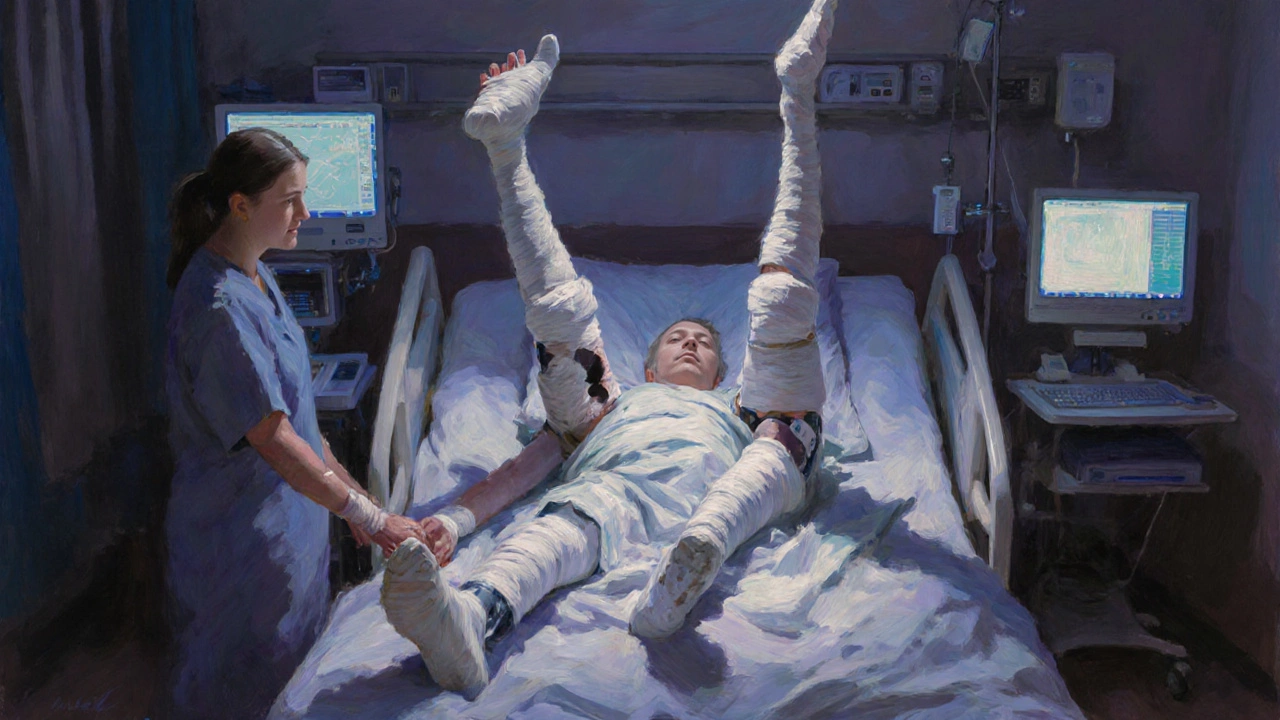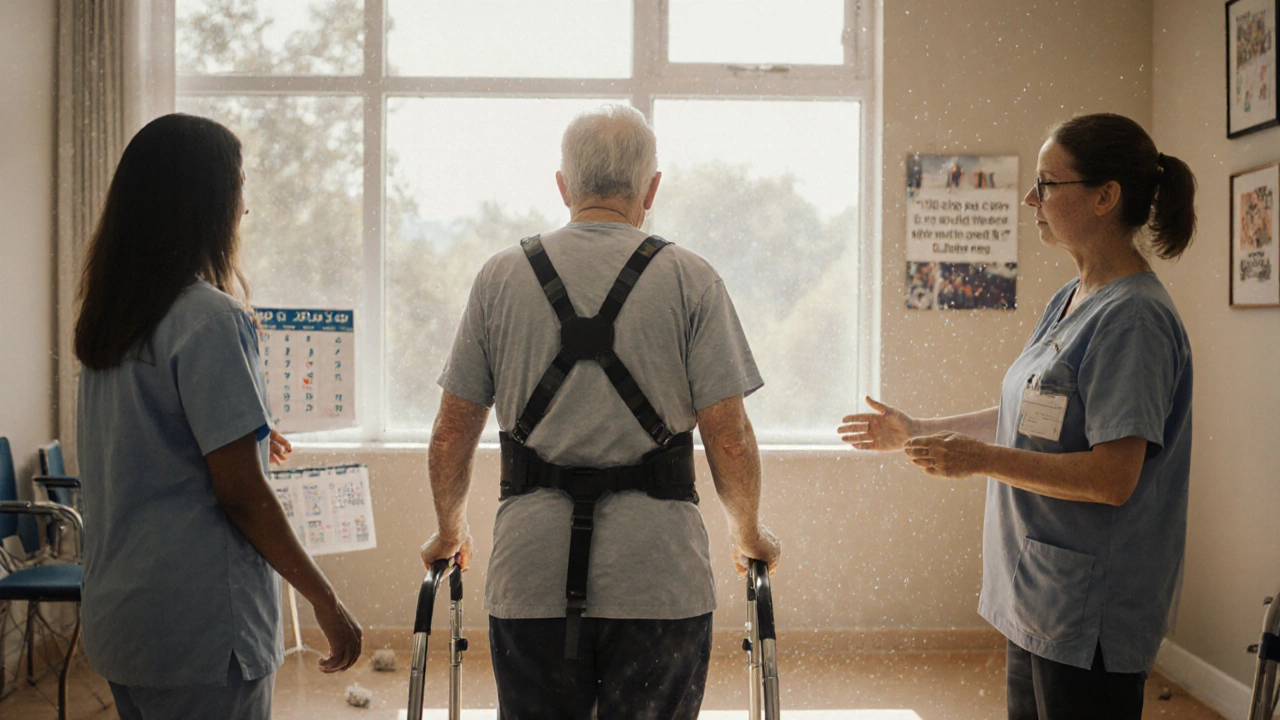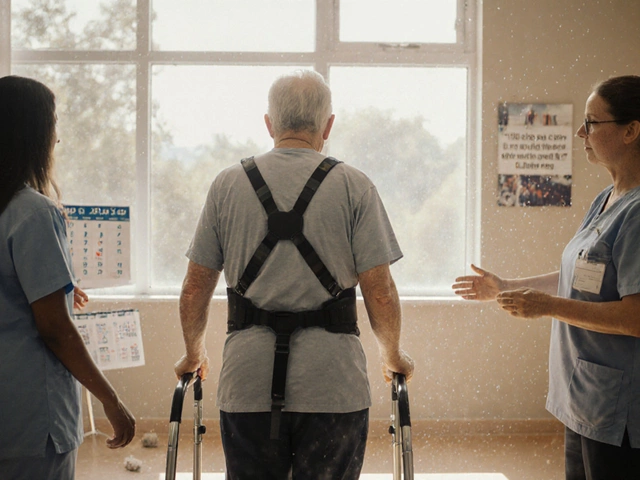Recovery Time Estimator
Estimate Your Recovery Timeline
Based on your surgery type and health factors, we'll provide a personalized recovery estimate.
Your Estimated Recovery Timeline
Initial Recovery
Functional Recovery
Full Recovery
Important: This is an estimate based on medical research. Individual recovery times vary based on your specific condition, surgical team, and personal healing factors.
When someone asks what surgery has the longest recovery time, they’re not just curious-they’re probably planning for life after surgery. Maybe they or a loved one are facing a major operation, and the fear isn’t just about the cut. It’s about the months ahead: no driving, no lifting, no sleeping through the night, no normal routines. The truth is, not all surgeries are created equal when it comes to healing. Some bounce back in weeks. Others take a year or more to feel like yourself again.
Spinal Fusion Surgery: The Longest Haul
Spinal fusion consistently ranks as the surgery with the longest recovery time. It’s not just about fusing two vertebrae together-it’s about rebuilding the entire support system of your spine. The bone graft needs to grow solidly between the bones, and that takes time. In most cases, patients need at least 6 months before they can return to light physical activity. Full recovery? Often 12 to 18 months.
Why so long? Your spine doesn’t heal like a broken arm. It’s surrounded by nerves, muscles, and ligaments that all get disturbed during surgery. After the operation, you’ll wear a brace for weeks. Walking is encouraged early on, but bending, twisting, and lifting anything over 5 pounds is banned for months. Many patients report numbness, tingling, or stiffness that lingers for over a year. A 2023 study from the Journal of Bone and Joint Surgery found that 40% of spinal fusion patients still had moderate pain at 18 months post-op, even with physical therapy.
Recovery isn’t just physical. It’s mental. The isolation, the loss of independence, the slow progress-it wears people down. That’s why patients who stick to daily walking, follow their PT plan, and avoid smoking have the best outcomes.
Total Joint Replacements: Slower Than You Think
People assume knee or hip replacements are quick fixes. They’re not. While many walk out of the hospital in 2-3 days, full recovery takes 6 to 12 months. The body doesn’t just accept the new joint-it has to relearn how to move around it.
After hip replacement, you can’t cross your legs for 3 months. After knee replacement, you can’t kneel for 6 months. The scar tissue around the joint forms slowly, and if you rush rehab, you risk stiffness or even dislocation. A 2024 survey of 2,100 joint replacement patients in India showed that only 28% felt completely back to normal by 6 months. By 12 months, that number jumped to 79%.
Recovery isn’t just about strength. It’s about balance. Many patients stumble because their inner ear and muscle memory haven’t caught up with the new joint. That’s why physical therapy isn’t optional-it’s essential. Skipping sessions delays progress by months.
Complex Pelvic Reconstruction: The Hidden Long-Term Surgery
This one rarely makes headlines, but it’s one of the most grueling recoveries in orthopedics. It’s often done after trauma, cancer removal, or severe birth defects. The surgery can take 8-12 hours. Recovery? 12 to 24 months.
Why? Multiple bones are rebuilt using grafts from the ribs, hips, or legs. Nerves are reconnected. Blood vessels are repaired. Patients often need multiple follow-up surgeries. Walking may be possible after 3 months, but running, climbing stairs, or sitting for long periods? That’s a year away. Many patients use wheelchairs or walkers for half a year. The emotional toll is heavy-many report depression during the first 9 months.
Recovery here isn’t linear. You’ll have good weeks and bad weeks. Progress isn’t measured in days-it’s measured in small victories: standing without help, taking a shower alone, putting on your own shoes.

Multi-Limb Reconstruction: When the Body Needs a Complete Reset
This surgery is rare but brutal. It’s used after severe accidents-car crashes, industrial injuries, or burns that destroy bones, muscles, and nerves in multiple limbs. In some cases, surgeons rebuild arms and legs using bone grafts, skin flaps, and nerve transfers.
Recovery can take 2 years or more. You’ll need dozens of surgeries over time. Physical therapy is 5-6 days a week, often for 2 hours a day. Some patients regain 70% function. Others never fully regain movement. The key? Patience and a strong support system. Families who stay involved in rehab see better outcomes. Isolation leads to setbacks.
One patient from Chennai, injured in a motorcycle accident in 2023, spent 14 months in rehab. He could finally ride a bicycle again in 2025. But he still can’t lift his left arm above shoulder height. That’s the reality: recovery doesn’t always mean full restoration.
Why Recovery Time Varies So Much
Not everyone heals the same way. Age matters. A 25-year-old with a spinal fusion heals faster than a 70-year-old. But even young patients can struggle if they smoke, have diabetes, or are overweight. Smoking cuts blood flow to bones and slows healing by up to 50%. Diabetes increases infection risk and delays tissue repair.
Surgeon skill counts. A well-placed screw or precise nerve repair makes a difference. Hospital quality matters too. Hospitals with dedicated rehab teams and follow-up protocols see faster recoveries. In Bangalore, hospitals with in-house physiotherapy units report 30% faster return-to-work times than those without.
And then there’s mindset. Patients who treat recovery like a job-showing up for PT, tracking progress, celebrating small wins-do better than those who wait for healing to happen on its own.

What You Can Do to Speed Up Recovery
You can’t rush biology, but you can support it.
- Stop smoking. Even cutting back helps. Quitting 4 weeks before surgery improves healing.
- Eat for bone growth. Protein, vitamin D, calcium, and zinc are non-negotiable. Try eggs, dairy, leafy greens, nuts, and lean meat.
- Move early, move often. Walking 10 minutes a day after surgery reduces blood clots and keeps muscles alive.
- Follow your PT plan. Don’t skip sessions. Do your home exercises even when you’re tired.
- Manage pain without opioids. Long-term painkillers slow healing. Use ice, heat, and gentle movement instead.
Recovery isn’t a race. It’s a marathon with no finish line you can see until you’re halfway through.
When to Seek Help During Recovery
Some setbacks are normal. Others aren’t. Call your doctor if:
- Swelling or redness gets worse after 2 weeks
- You have a fever over 101°F (38.3°C)
- Pain suddenly spikes instead of slowly improving
- You can’t feel your toes or fingers after surgery
- You can’t urinate or have bowel movements for more than 3 days
These aren’t just inconveniences. They’re warning signs. Early intervention can prevent permanent damage.
Which surgery has the longest recovery time?
Spinal fusion surgery typically has the longest recovery time, often taking 12 to 18 months for full healing. The bone graft needs to fuse completely, nerves must adapt, and surrounding muscles rebuild strength. Many patients still experience stiffness or discomfort beyond a year, even with proper rehab.
Is joint replacement recovery really that long?
Yes. While you might walk within days of a knee or hip replacement, full recovery takes 6 to 12 months. The body needs time to adjust to the new joint, rebuild muscle strength, and relearn movement patterns. Rushing back to high-impact activities can damage the implant or cause stiffness.
Can you speed up recovery after major surgery?
You can’t rush healing, but you can support it. Quit smoking, eat protein-rich foods, do your physical therapy exercises every day, and walk regularly. Staying active and avoiding painkiller overuse helps your body heal faster. Patients who treat recovery like a daily job recover 30-40% quicker than those who wait for improvement.
Does age affect recovery time after orthopedic surgery?
Yes. Older adults heal slower due to reduced blood flow, lower bone density, and weaker muscles. But age alone doesn’t determine outcome. A healthy 70-year-old who exercises and eats well often recovers faster than a sedentary 40-year-old. Fitness and lifestyle matter more than years on the clock.
How long should you avoid driving after spinal fusion?
Most patients are advised not to drive for at least 6 to 8 weeks after spinal fusion. This is because sudden movements, braking, or turning can strain the healing spine. Even after 8 weeks, you should test your ability to turn quickly and react to emergencies before getting behind the wheel. Always check with your surgeon before driving.
Why does recovery take longer for some people than others?
Recovery speed depends on many factors: age, overall health, smoking status, diabetes, weight, nutrition, and how well you follow rehab instructions. People with strong social support and consistent physical therapy do better. Mental health also plays a role-depression and anxiety can delay healing by affecting sleep, motivation, and pain perception.
Final Thoughts: Healing Isn’t a Deadline, It’s a Journey
There’s no magic fix for long recovery times. The body doesn’t work on schedules. It works on biology. Spinal fusion, pelvic reconstruction, and multi-limb repairs aren’t just surgeries-they’re life-changing events that demand patience, discipline, and support.
If you’re facing one of these procedures, remember: the goal isn’t to get back to normal as fast as possible. It’s to get back to a life you can live without pain, without fear, without limits. That takes time. But with the right care, the right mindset, and the right team, it’s absolutely possible.






